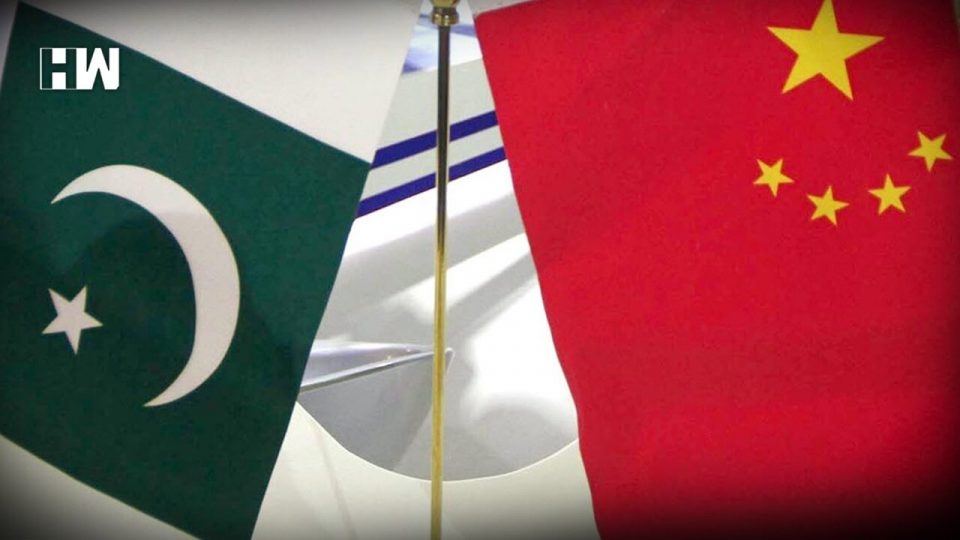Beijing | China is building the first of four “most advanced” naval warships for its “all-weather ally” Pakistan as part of a major bilateral arms deal to ensure among other things “balance of power” in the strategic Indian Ocean, state media reported.
Equipped with modern detection and weapon systems, it will be capable of anti-ship, anti-submarine and air-defence operations, China Daily quoted state-owned defence contractor China State Shipbuilding Corporation (CSSC) as saying.
The under-construction ship is a version of the Chinese Navy’s most advanced guided missile frigate, it said.
The CSSC did not specify the ship’s type but said it is being constructed at its Hudong-Zhonghua shipyard in Shanghai.
China, an “all-weather ally” of Islamabad, is the largest supplier of the weapon system to Pakistan. Both the countries also jointly manufacture JF-Thunder a single engine multi-role combat aircraft.
The ship’s class is Type 054AP, which means it is based on the Type 054A of the People’s Liberation Army (PLA) Navy, the report quoted the Pakistani Navy as saying.
The Pakistani Navy previously said four such ships had been ordered, according to the report.
Once constructed, the warship “will be one of the largest and technologically advanced platforms of the Pakistani Navy and strengthen the country’s capability to respond to future challenges, maintain peace and stability and the balance of power in the Indian Ocean region,” the report said.
It will also support the Pakistani Navy’s initiative of securing sea lanes for international shipping by patrolling distant waters, the daily quoted the CSSC as saying.
The mention of the Indian Ocean is regarded as significant as China, which has already taken over Pakistan’s strategic Gwadar port under the multi-billion China-Pakistan Economic Corridor (CPEC), looks to assist the Pakistani navy to restore the balance of power in India’s backyard.
China has acquired the logistical military base in Djibouti and taken over the Hambantota port of Sri Lanka under a 99-year debt swap deal.
China recently denied a New York Times report that it finalised a plan to build advanced fighter aircraft under the CPEC in Pakistan, adding a military dimension to it.
India protested to China over the CPEC as it is being laid through the Pakistan-occupied Kashmir (PoK).
Pakistan became the first country to hook on to China’s BeiDou Satellite Navigation System, a rival to the US Global Positioning System (GPS) which went global recently. The system was expected to be used for military applications.
The report said Type 054A is the best frigate in service with the PLA Navy. Military sources said the ship has a fully loaded displacement of about 4,000 metric tonnes and is equipped with advanced radars and missiles. About 30 Type 054As are in service with the PLA Navy.
An insider in China’s shipbuilding sector with knowledge of the Type 054AP programme told the Daily that the ship is the largest and most powerful combat vessel China has ever exported.
“Based on pictures circulating on the internet, the ship will have vertical launch cells that can fire Chinese HQ-16 air-defence missiles and other kinds of missiles. Vertical launch cells will bring flexibility to the user in terms of weapons portfolio, thus giving it a stronger fighting capability,” he said, adding that the Type 054AP is the best frigate Pakistan can access in the international market.
“The service of Type 054APs will double the combat power of the Pakistani Navy’s surface fleet,” he said.
Commenting on the ship’s construction, Cao Weidong, a senior researcher at the PLA’s Naval Military Studies Research Institute, said in the past, the Pakistani Navy would ask its Chinese contractors to use Western radars or weapons on ships constructed by the Chinese shipbuilders because it believed the Western naval technologies were better than Chinese ones.
“But it seems that all weapons and radars on the new ship will be Chinese products, which reflects our progress in the industry and the Pakistani Navy’s confidence in our technology and capability,” he said.
Cao said there are many nations selling frigates in the market, so Pakistan must have made thorough comparisons in terms of combat capability and costs.
“I believe the reason they chose our type is that ours is one of the few that can carry out all of the air-defence, anti-ship and anti-submarine tasks,” he said, expecting the service of the Chinese frigate to substantially boost Pakistan’s defence capability.
As an independent media platform, we do not take advertisements from governments and corporate houses. It is you, our readers, who have supported us on our journey to do honest and unbiased journalism. Please contribute, so that we can continue to do the same in future.

